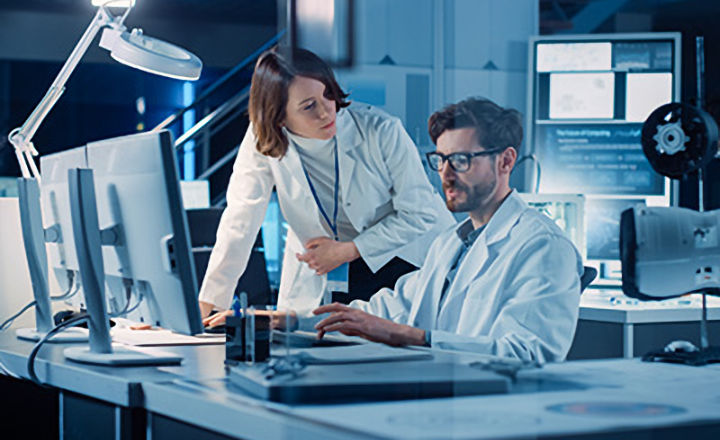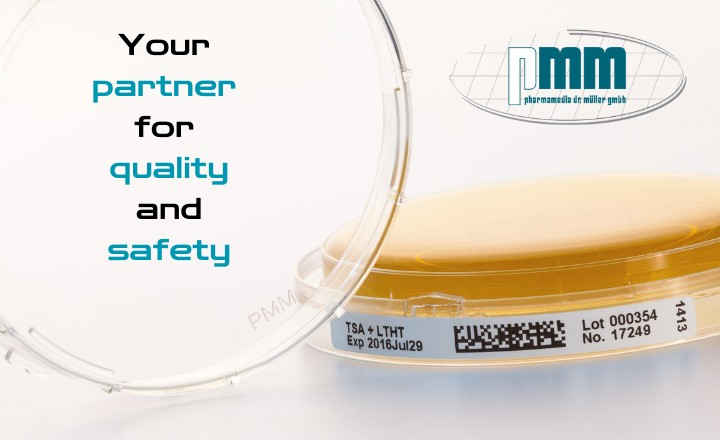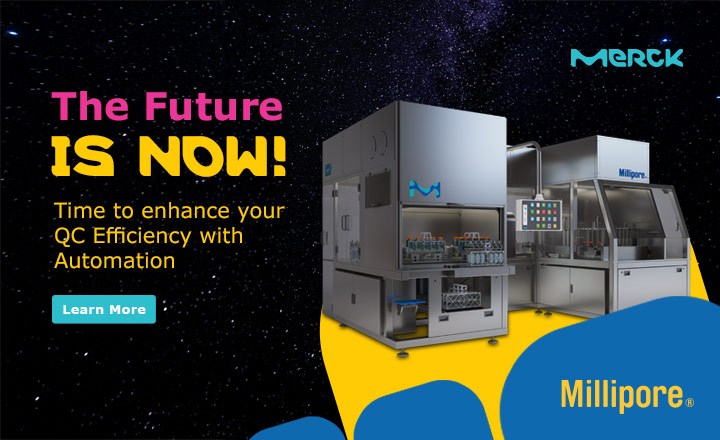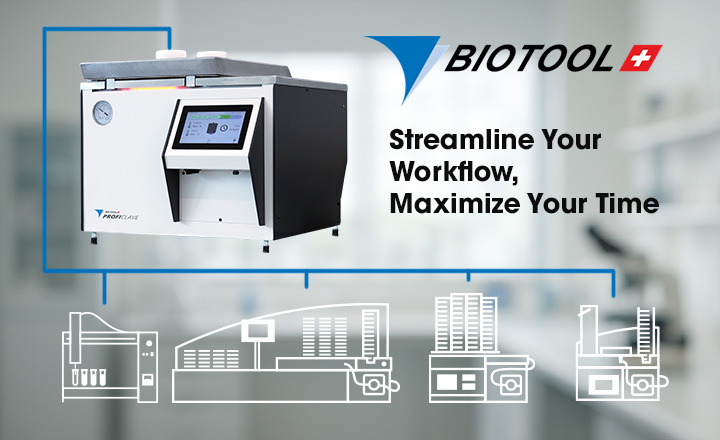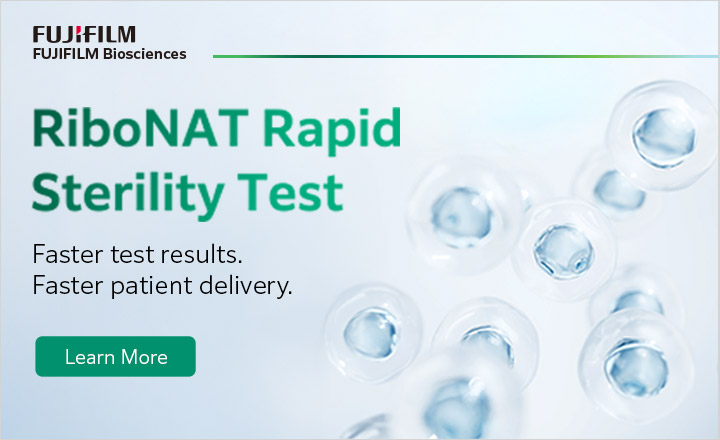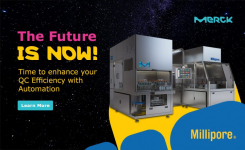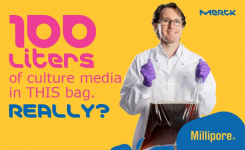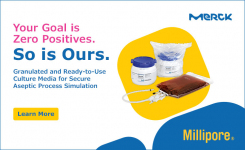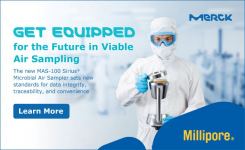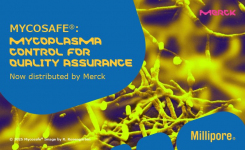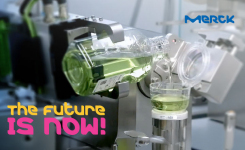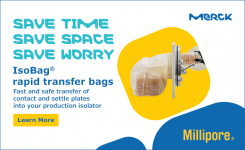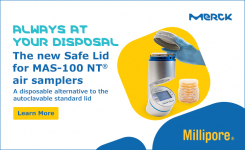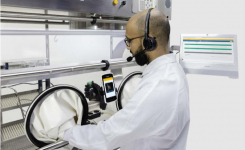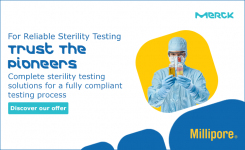An interview with Philippe Rivat, Director of Strategic and Emerging Technologies at Merck, about the company’s projects to introduce automation & robotics into microbiological quality control.
Q: Philippe, how will customers in the pharmaceutical industry benefit from robotics and automation?
Philippe: Robotics and automation, in combination with digitalization, have the potential to completely transform microbiological quality control. They help to reduce manual testing errors, speed up getting products to market, and save both time and costs, while improving data integrity and security. The customer benefits of digitalization alone are huge, but they become even greater when implemented in combination with automated hardware and robotic components.
Q: You head the technical side of Merck’s QC automation and robotics projects. What are you currently focusing on?
Philippe: The areas where we are making the fastest progress are in environmental monitoring and in bioburden testing. We already have a prototype mobile robot for microbial air sampling and an automation solution for bioburden testing, and we’re adapting the corresponding consumables, mostly in cooperation with pharmaceutical and integrator companies. We’re also working on data management and traceability in sterility testing. Endotoxin and pyrogen testing are on our future road map but as of now, we do not have anything in the immediate pipeline.
Q: How much of the testing workflows do you believe will eventually be automated?
Philippe: Not all workflow steps are suitable for robotics, automation, and accompanying digitalization, so some are going to stay manual, particularly where volumes are too low. It’s important that customers keep the capability to perform manual testing for when maintenance is performed on the automated system, for example. They constantly have new matrices to deal with, and it’s probably also easier to develop methods using manual procedures before going into automation. So it’s not either manual or automated testing - they complement each other.
Q: Which particular tasks are you planning to automate?
Philippe: In each of the areas where we’re developing applications, there are three steps of the workflow to examine: sampling, testing, and evaluation. In air monitoring, the focus is to automate sampling and colony counting. For bioburden, we’re looking more at the testing itself and digitally reading the results than at sampling. Whatever you do, you have to integrate sampling, testing, and evaluation in the solution you eventually offer.
Q: In environmental monitoring, there’s passive and active air monitoring to consider, and they’re performed in very different settings
Philippe: Yes, it’s all very complex. We have to address both classified rooms and production isolators. Our mobile robot will be suitable only for classified rooms. Our aim is to keep each robot dedicated to one classified room, where it can save two hours of technicians’ work per day. Isolators, on the other hand, have little space available, but we are nevertheless looking to develop certain technology bricks for them as well. Production in isolators currently has to stop for 30 minutes every four hours just to change the plates, which requires two technicians each time. This significantly reduces production capacity. An automated solution for EM in isolators could eliminate this step.
Q: So an isolator is too small for a robot?
Philippe: Indeed. Production isolators cost more the bigger they are, so space is precious. Thus there has to be a dedicated solution for isolators. While others will work on automation, our role here will be to focus on the consumables. Several leading isolator manufacturers have contacted us to find a solution for sampling in isolators, in particular integrating new features into our existing consumables. They, in turn, are cooperating with their own customers in pharma to eliminate the glove box in order to reduce the risk of contamination.
Q: What is your approach for bioburden testing?
Philippe:In this field we are building on our flagship high-tier Milliflex Oasis® membrane filtration solution, which is probably the easiest on the market to automate, a huge competitive advantage. We are filling some gaps to make its consumables ready for automation.
Q: Merck is the market leader in filtration-based sterility testing. What’s your strategy here?
Philippe: Sampling for sterility testing builds on the final packaging of the product, which we cannot influence, and testing is complex, with customers using very different protocols and consumables. Sterility testing is also highly critical for customers, so their expectations with regards to robustness are even higher. The current levels of handling errors are quite low because the staff performing sterility testing are often higher skilled, and testing volumes are low as well. The solution we’re currently developing is a digital companion to support and record the critical data from manual handling, which is likely to include voice control, camera, and barcode scanning to avoid complex manual data management.
Q: What are the criteria that make an automation solution succeed in the market?
Philippe: Any automation and robotics solution must financially benefit the customer within a few years. Pharmaceutical companies will scrutinize whether a solution is robust, the throughput is sufficiently high and the investment pays off fast enough, perhaps within two or three years. The total cost of ownership must also be right. If there are no savings for customers, it’s not going to be viable. For them, there is a high level of investment involved, so we have to keep the capital expenditure within limits and thoroughly convince them before they’re willing to propose anything to their top management. We must also use similar tools and interfaces across our various applications to keep training and maintenance costs down for the customer—the same people often perform several different tests.
Q: How are you involving customers in the development process?
Philippe: We calculate the total cost of ownership of a solution and identify the key pain points. Based on this, we develop ideas for improvement that we share with the customer. They challenge the changed solution, and we further improve it in an iterative process. We have created a global robotics and automation advisory group of thought leaders from leading pharmaceutical companies who provide us with their feedback on the lab automation solutions we develop. Our prototypes are currently housed at our facility in Molsheim, France, where we have the capacity to demonstrate them at short notice, and this has allowed us to quickly implement improvements. We also have a variety of virtual tools available that allow us to share alternatives faster than physical iterations and to gather customer feedback faster. We’re able to send updated data if and when the customer can’t travel. This is a new way of optimizing a complex product and is speeding up our development process.


